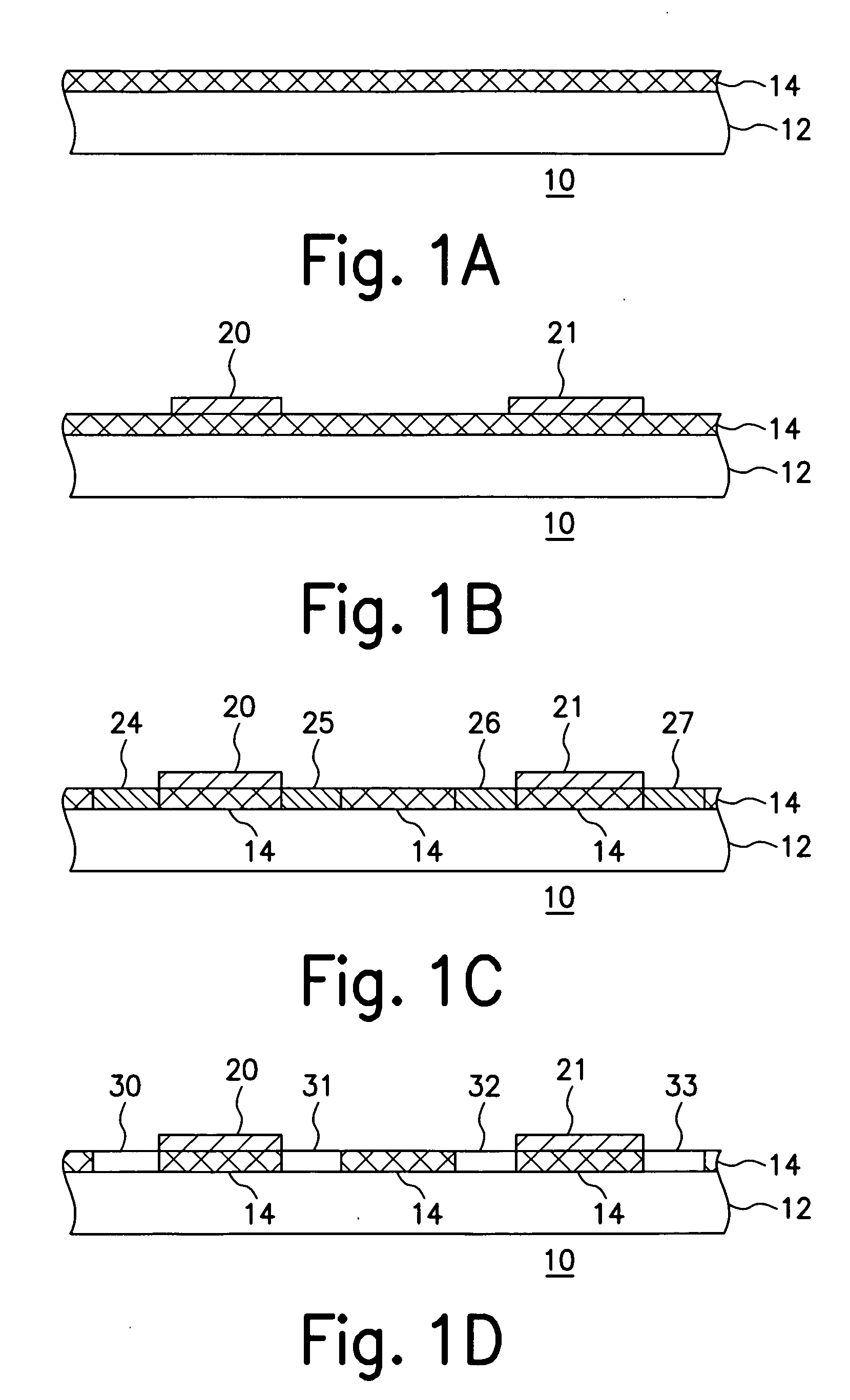Structure and method for III-nitride device isolation
a technology of iiinitride and isolation technique, which is applied in the direction of semiconductor devices, basic electric elements, electrical apparatus, etc., can solve the problems of high current densities with low resistive losses, high leakage through barrier layers, and dislocation of films grown to produce different layers, so as to reduce specific resistance, reduce size standoff regions, and improve the performance of iii-nitride semiconductor materials
- Summary
- Abstract
- Description
- Claims
- Application Information
AI Technical Summary
Benefits of technology
Problems solved by technology
Method used
Image
Examples
Embodiment Construction
[0036] The advantages of III-nitride materials in conducting large amounts of current and withstanding high voltage are typically realized in a GaN / AlGaN layer construction, although other types of constructions may readily be used in the III-nitride material system. For example, whenever two different materials in the III-nitride material system have different in-plane lattice constants, such that a high mobility interface is formed between the two layers, the advantages of high blocking current and high current conduction in devices constructed with the interface are readily observed.
[0037] It is often the case that III-nitride material semiconductor devices are formed on a wafer level, where a number of devices may be fabricated at the same time. Accordingly, a substrate is often used as a base upon which the III-nitride semiconductor devices may be formed, where the devices are composed of a buffer layer and / or a body layer with different composition III-nitride materials. Ofte...
PUM
 Login to View More
Login to View More Abstract
Description
Claims
Application Information
 Login to View More
Login to View More - R&D
- Intellectual Property
- Life Sciences
- Materials
- Tech Scout
- Unparalleled Data Quality
- Higher Quality Content
- 60% Fewer Hallucinations
Browse by: Latest US Patents, China's latest patents, Technical Efficacy Thesaurus, Application Domain, Technology Topic, Popular Technical Reports.
© 2025 PatSnap. All rights reserved.Legal|Privacy policy|Modern Slavery Act Transparency Statement|Sitemap|About US| Contact US: help@patsnap.com


